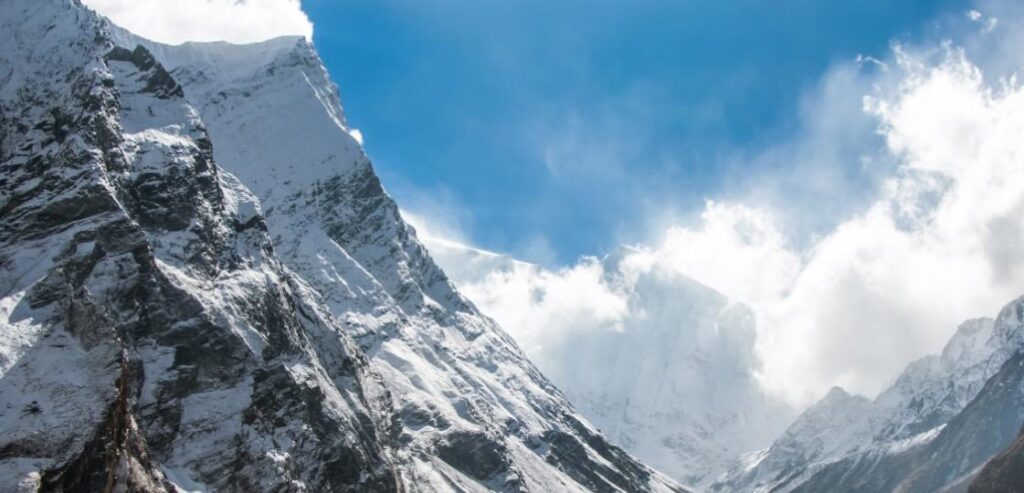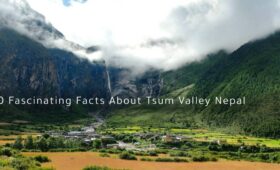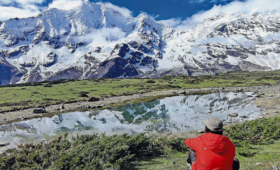Introduction:
If you’re wondering about the cultural immersion in Tsum Valley, then you are at the right place!
Nepal, known as the land of the Himalayas, has always been a popular choice for trekking enthusiasts. The Manaslu region is a hidden treasure in Nepal, showcasing untouched natural beauty that is rarely seen on other well-known trekking paths. This route allows you to explore secluded villages, vibrant forests, challenging mountain passes, and witness awe-inspiring vistas of the Manaslu mountain range.

The Manaslu Tsum Valley Trekking is a fusion of the Manaslu Circuit Trek and the Tsum Valley Trek, two renowned trekking routes in Nepal. You will also get to experience the cultural immersion in Tsum Valley during your trek. This route is less crowded and ideal for individuals seeking to immerse themselves in the breathtaking beauty of the Himalayas without the hustle and bustle of large crowds. The trek commences from Arughat, a quaint town in the Gorkha District, and concludes at the same location upon completing the circuit.
Local Culture and Religion at Tsum Valley:

The Tsum Valley, located in the northern part of Gorkha District, is a remote valley that serves as a trekking route. It is also known as the “Hidden Valley” and is considered a sacred Himalayan pilgrimage site. The valley is inhabited by the Tsumba people, who have their own distinct culture, language, dress, and customs, setting them apart from other communities in Nepal.
The trekking trail goes through various traditional villages such as Philim, Chumling, and Mu Gompa. These villages provide a distinct understanding of the Tsumba people’s culture and way of life. Additionally, these villages house numerous ancient monasteries and shrines that attract pilgrims from all parts of Nepal.
Immerse Yourself in Local Culture:
One of the main attractions of the Manaslu Tsum Valley is the chance to fully experience the local culture. During the trek, you will pass through isolated villages where you can engage with the residents and discover their way of living. Additionally, you will have the opportunity to explore ancient monasteries and observe traditional rituals. This cultural immersion enhances the trek and enables you to develop a profound comprehension of the area and its inhabitants.
Experience the Beauty of the Himalayas:
Manaslu Tsum Valley Trekking provides breathtaking views of the mountains, including Mount Manaslu, the eighth highest mountain in the world. The trek allows you to explore remote villages and valleys, giving you a unique experience of the beauty of the Himalayas. Whether you are an experienced trekker or a beginner, the views on this trek will leave you in awe.
Trek Off the Beaten Path:
If you’re seeking a trek that is not commonly taken, the Manaslu Tsum Valley Trekking is an ideal option. Unlike the more well-known treks in the area, the Manaslu Tsum Valley Trekking is still relatively unknown. This implies that you will have the chance to discover remote regions and witness the magnificence of the Himalayas without the presence of large groups of people. The trek will lead you through untouched forests, over lofty mountain passes, and into traditional villages, providing a distinctive and memorable adventure.
Encounter Unique Wildlife:

Manaslu Tsum Valley Trekking is known for its diverse wildlife, including the rare Snow Leopard, Himalayan Tahr, musk deer, and blue sheep. The region is also home to a variety of bird species, such as the colorful Himalayan monal. Exploring this area while trekking allows you to witness these animals in their natural environment, creating an unforgettable adventure.
Support Local Communities:
One of the main reasons to include Tsum Valley in your list of must-do activities is the chance to support the local communities. The trekking trail goes through various small villages, providing you with the opportunity to engage with the locals and gain insights into their way of living. By staying in local teahouses and buying products from local stores, you can directly contribute to the local economy and assist in promoting sustainable tourism in the region. Additionally, you will have the privilege of experiencing the genuine warmth and hospitality of the Nepalese people.
Conclusion: Cultural Immersion in Tsum Valley
A journey to Tsum Valley offers not just a trek through breathtaking landscapes but also a profound cultural immersion in Tsum Valley into the heart of Tibetan Buddhist traditions. From the ancient monasteries perched amidst snow-capped peaks to the warm hospitality of the local communities, every moment spent in Tsum Valley is an opportunity to connect with the rich heritage of the Himalayas.
Whether it’s participating in traditional rituals, sharing stories with local families, or simply marveling at the beauty of nature, the experiences gained here are bound to leave a lasting impression. Tsum Valley stands as a testament to the beauty of cultural diversity and the universal language of kindness that transcends borders. Embarking on this journey is not just about exploring a remote corner of the world but also about discovering the depths of one’s own spirit amidst the serenity of the Himalayas.
Frequently Asked Questions (FAQ’s)
1. What is Tsum Valley?
Tsum Valley is a remote Himalayan valley located in the northern part of Gorkha District in Nepal. It’s renowned for its pristine natural beauty, rich cultural heritage, and unique Tibetan-influenced traditions.
2. Why is Tsum Valley special?
Tsum Valley is known for its unspoiled natural landscapes, ancient Buddhist monasteries, and the warm hospitality of its inhabitants. It offers a rare opportunity to immerse oneself in Tibetan Buddhist culture and traditions.
3. What Cultural Immersion in Tsum Valley will I experience?
In Tsum Valley, you can experience authentic Tibetan Buddhist culture, visit ancient monasteries such as Mu Gompa and Rachen Gompa, participate in traditional rituals and festivals, and interact with local communities to learn about their way of life.
4. What are the accommodation options in Tsum Valley?
Accommodation in Tsum Valley primarily consists of guesthouses and homestays operated by local families. These provide basic amenities such as meals, lodging, and a glimpse into the local lifestyle.
5. When is the best time to visit Tsum Valley?
The best time to visit Tsum Valley is during the spring (March to May) and autumn (September to November) seasons when the weather is pleasant, and the skies are clear, offering stunning views of the Himalayas.
6. What cultural etiquette should I follow in Tsum Valley?
It’s important to respect local customs and traditions while visiting Tsum Valley. This includes removing your shoes before entering monasteries, asking for permission before taking photographs, and dressing modestly, especially when visiting religious sites. Additionally, greeting locals with a “Namaste” and a smile goes a long way in fostering positive interactions.





